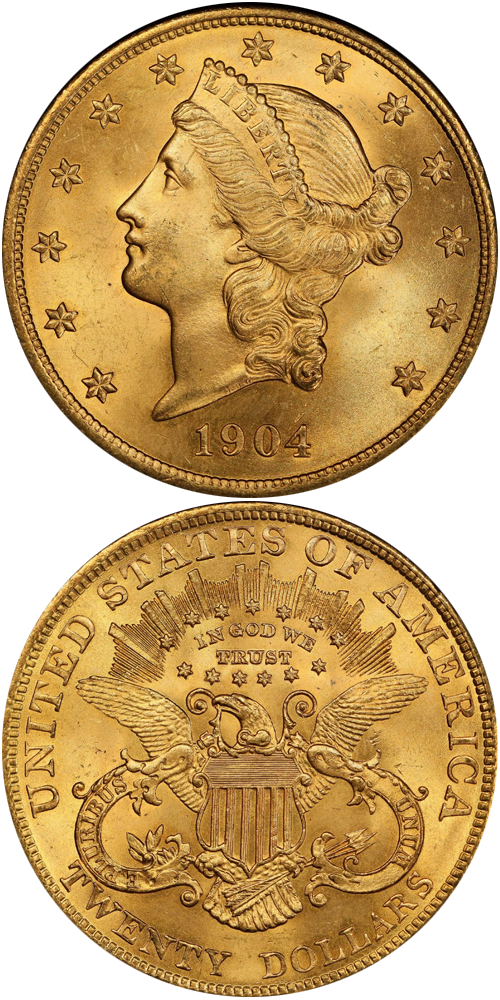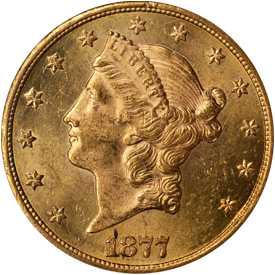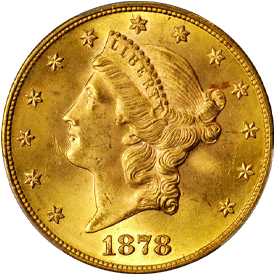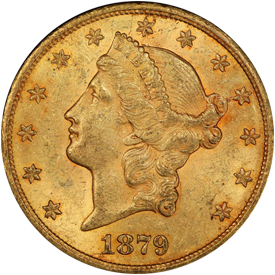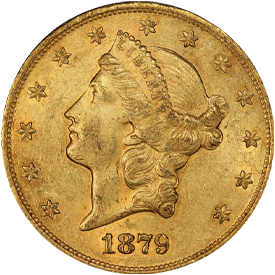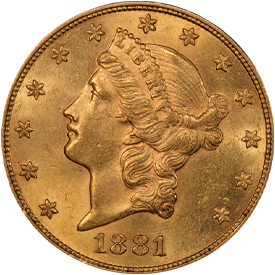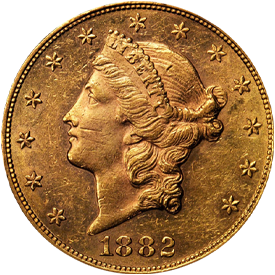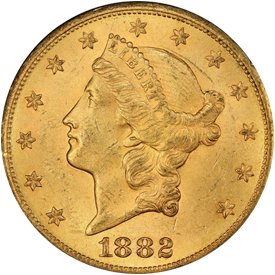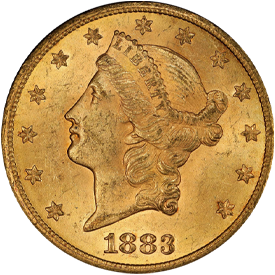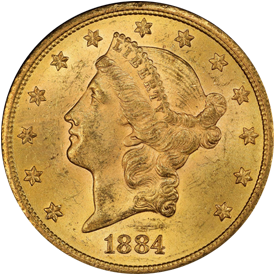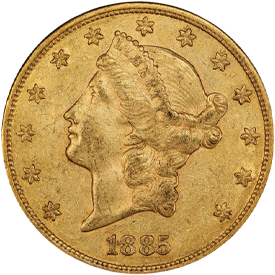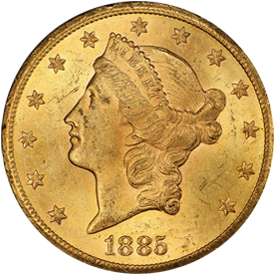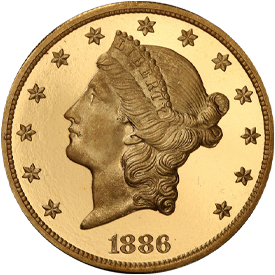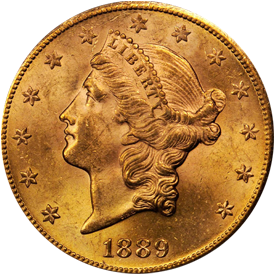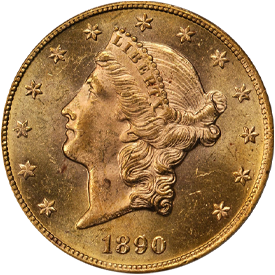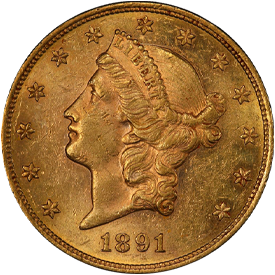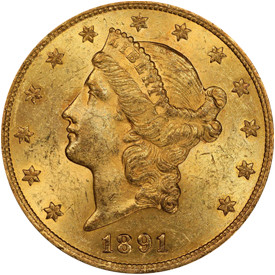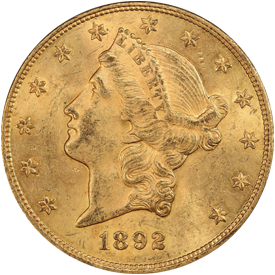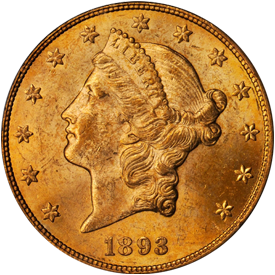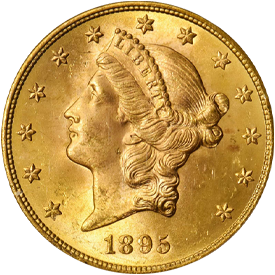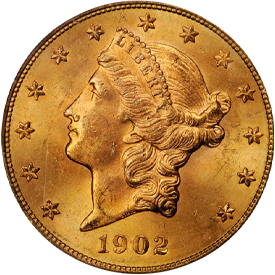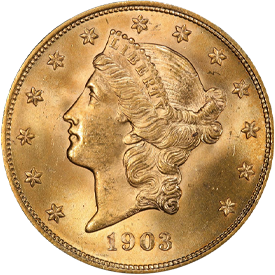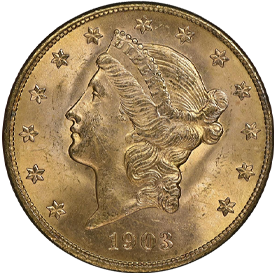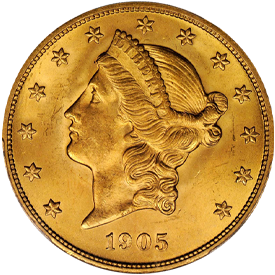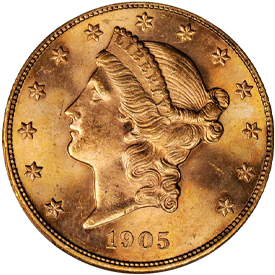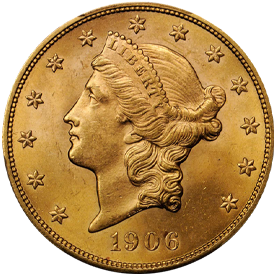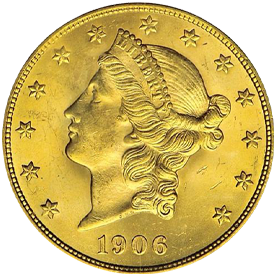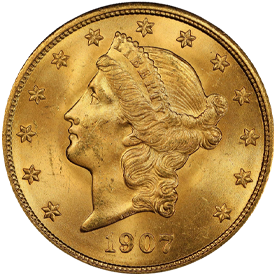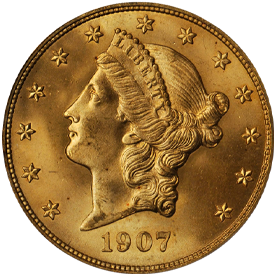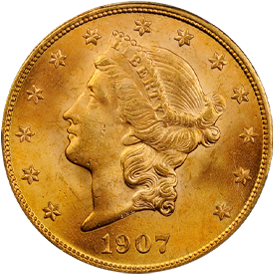Designed by: James Barton Longacre
Issue Dates: 1877-1907
Composition: 90% gold, 10% copper
Diameter: 34 mm
Weight: 33.436 grams (515.99 grains)
Edge: Reeded
Proof Mintage: 2,426
With the discovery of a large quantity of gold in California in 1848 and the rush that followed, large quantities of bullion were available to the Mint, and in 1849 a pattern $20 gold coin or double eagle was struck. Production got underway the following year in both Philadelphia and New Orleans, and these were joined by San Francisco in 1854 and Carson City in 1870.
James B. Longacre’s obverse design was an enlarged version of the Liberty head he had done for the gold dollar which had debuted the previous year. The reverse pictured a heraldic eagle with an arc of rays above. The coins contained nearly a full ounce (.9675) of pure gold, and their diameter was almost exactly between a half dollar and a silver dollar. The double eagles packed substantial purchasing power and while inflation statistics over nearly two centuries can prove tricky to measure exactly, $20 in the mid 19thcentury would equate to around $500 today.
Three distinct types of $20 Liberties were made, distinguished by changes on the reverse of the coin. The first, made from 1850 through 1866 did not carry the motto IN GOD WE TRUST on the back. The second (1866-1876) had the motto, and the denomination at the lower rim read: “TWENTY D.” In 1877, the denomination was changed to “TWENTY DOLLARS”, and this third type continued through the end of production in 1907.
A complete date and mintmark set of $20 Liberties is a daunting task, and few collectors can expect to accomplish that feat. Standing in the way is the 1879-O, 1885, and 1886. The last really tough date is the 1891, after which most are available in circulated grades.
Due to their impressive size and weight, $20 Liberties struck from roughly 1894 through 1907 are a popular form in which to hold gold bullion, and many XF-AU pieces are held by investors for that purpose.
